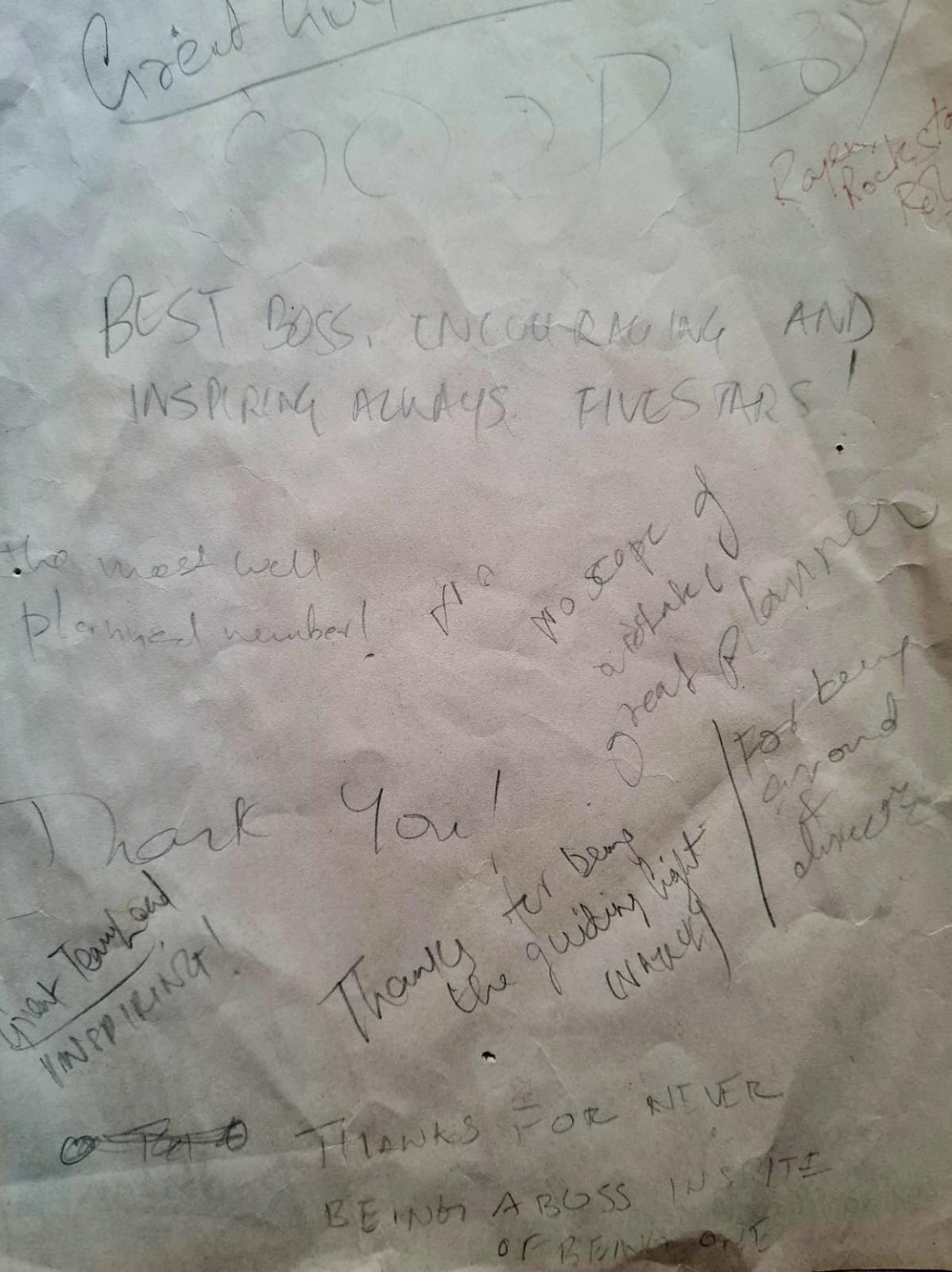How would you feel if people you know wrote nice things about you but you couldn’t identify who wrote what?
This is precisely how I felt 12 years ago and again last week.
Before moving to a new office, I cleared my desk, tackling each paper with nostalgia and purpose. And then, amidst the piles of forgotten documents, I stumbled upon a weathered piece of paper that held memories from a dozen years ago.
This sheet wasn’t just any piece of paper; it was a relic from an intriguing experiment conducted by a Consultant our office had brought in years ago.
In a curious social exercise, he had orchestrated a peculiar scenario: a room full of people, some blindfolded and others not, all engaged in an exercise of anonymous appreciation. Colleagues were encouraged to craft messages about each other, heartfelt words that resonated with the strengths and quirks that defined us.

What My Colleagues Wrote About Me 12 Years Ago
Lost in Anonymous Appreciation
The twist: The messages remained unsigned, the authors’ identities concealed forever.
That piece of paper, faded but not forgotten, had remained tucked away for years. It was a time capsule of sentiments, a testament to when the pencil was put to paper to unveil emotions.
If it were 30 years ago – when writing by hand was common – I’d have known who wrote what. In our digital age, this concept feels foreign. Handwriting has all but vanished from our lives. Our communication has shifted to electronic platforms, and the sterile uniformity of digital fonts has replaced the distinctiveness of each person’s handwriting.
Except for my immediate family, recognising someone’s handwritten note has become challenging. I’d wager you’re nodding in agreement—this is the modern conundrum.
We’ve traded pens for keyboards, tablets, and smartphones, relegating handwriting to signatures on official documents or the sporadic sticky note left on our desks as a reminder of impending tasks.
My own experience with handwriting is a testament to this shift. A distant memory from 2014 resurfaces – the ordeal of my post-graduate degree certification exam – that I attempted 20 years after completing my post-graduate diploma.
I had embarked on a ten-day handwriting practice journey, attempting to reacquaint myself with a skill that had become foreign through years of disuse.
The experience had its ups and downs, but it also ignited an appreciation for the tangible connection between mind and paper. Yet, once the exams were over and as life sped forward, my renewed relationship with handwritten expression fell by the wayside once more, overshadowed by the allure and convenience of digital writing.
The Shift to Digital Communication
Why do we gravitate toward digital communication?
Is it the convenience, the speed, or the reassurance that our words won’t fade away with time?
For me, it’s all three.
This preference isn’t just restricted to writing; reading habits, too, have migrated to the digital realm. The Kindle, with its multifaceted advantages, has become my reading companion. It boasts an array of benefits: the absence of storage woes, its portability, the ability to read under the covers without disturbing others, and its cost-effectiveness compared to physical books.
As we fall into these routines, embracing the ease and familiarity they bring, we inch closer to forming habits.
Admittedly, I’m no exception; the allure of digital convenience has left its mark on me.
How it Matters
In the rush of modern life, where digital communication dominates our interaction and convenience often trumps tradition, we overlook the profound connection that handwriting brings. If we had not given up this beautiful practice, we wouldn’t struggle to put faces to words like I did when I found the paper that rekindled so many emotions after a dozen years.
Although the allure of the digital age is undeniable, putting pen to paper carries a unique essence that transcends technology’s fleeting conveniences.
Amidst the convenience and uniformity, remember that each handwritten stroke carries a piece of your identity, connecting you to your past, your emotions, and the people around you.
As we navigate the digital landscape, let’s not lose sight of the beauty within the pages we create by hand—a tangible testament to our humanity and enduring connections. Your handwritten note bears your distinct identity in a way your digital correspondence never can.
Isn’t that enough to put pen to paper?
You decide.


